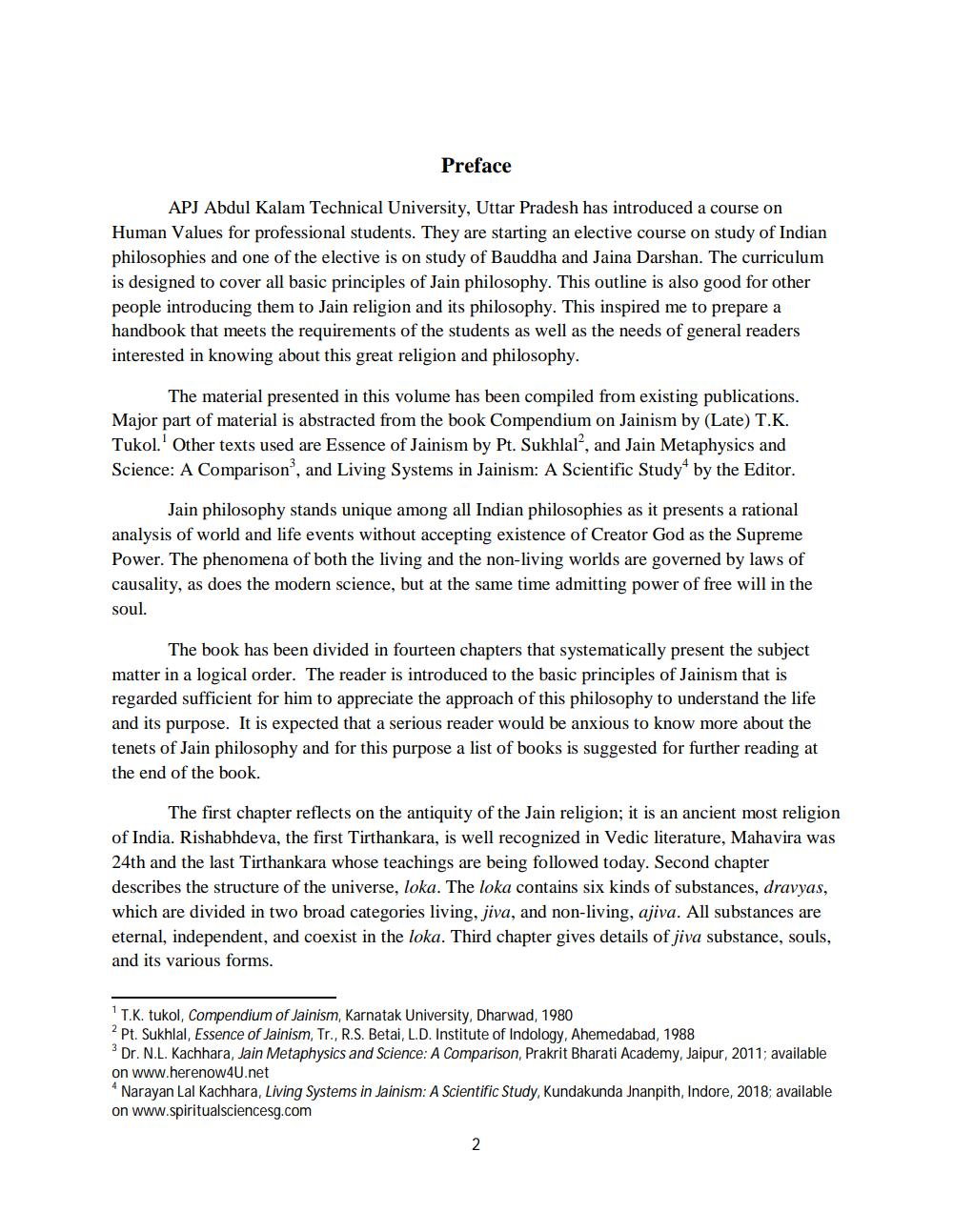Book Title: Basic Principles Of Jainism Author(s): Narayan Lal Kachhara Publisher: Narayan Lal Kachhara View full book textPage 2
________________ Preface APJ Abdul Kalam Technical University, Uttar Pradesh has introduced a course on Human Values for professional students. They are starting an elective course on study of Indian philosophies and one of the elective is on study of Bauddha and Jaina Darshan. The curriculum is designed to cover all basic principles of Jain philosophy. This outline is also good for other people introducing them to Jain religion and its philosophy. This inspired me to prepare a handbook that meets the requirements of the students as well as the needs of general readers interested in knowing about this great religion and philosophy. The material presented in this volume has been compiled from existing publications. Major part of material is abstracted from the book Compendium on Jainism by (Late) T.K. Tukol.' Other texts used are Essence of Jainism by Pt. Sukhlal, and Jain Metaphysics and Science: A Comparison, and Living Systems in Jainism: A Scientific Study by the Editor. Jain philosophy stands unique among all Indian philosophies as it presents a rational analysis of world and life events without accepting existence of Creator God as the Supreme Power. The phenomena of both the living and the non-living worlds are governed by laws of causality, as does the modern science, but at the same time admitting power of free will in the soul. The book has been divided in fourteen chapters that systematically present the subject matter in a logical order. The reader is introduced to the basic principles of Jainism that is regarded sufficient for him to appreciate the approach of this philosophy to understand the life and its purpose. It is expected that a serious reader would be anxious to know more about the tenets of Jain philosophy and for this purpose a list of books is suggested for further reading at the end of the book. The first chapter reflects on the antiquity of the Jain religion; it is an ancient most religion of India. Rishabhdeva, the first Tirthankara, is well recognized in Vedic literature, Mahavira was 24th and the last Tirthankara whose teachings are being followed today. Second chapter describes the structure of the universe, loka. The loka contains six kinds of substances, dravyas, which are divided in two broad categories living, jiva, and non-living, ajiva. All substances are eternal, independent, and coexist in the loka. Third chapter gives details of jiva substance, souls, and its various forms. T.K. tukol, Compendium of Jainism, Karnatak University, Dharwad, 1980 2 Pt. Sukhlal, Essence of Jainism, Tr., R.S. Betai, L.D. Institute of Indology, Ahemedabad, 1988 3 Dr. N.L. Kachhara, Jain Metaphysics and Science: A Comparison, Prakrit Bharati Academy, Jaipur, 2011; available on www.herenow4U.net Narayan Lal Kachhara, Living Systems in Jainism: A Scientific Study, Kundakunda Jnanpith, Indore, 2018; available on www.spiritualsciencesg.comPage Navigation
1 2 3 4 5 6 7 8 9 10 11 12 13 14 15 16 17 18 19 20 21 22 ... 106
